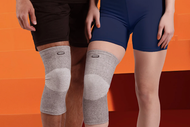Embark on your cycling journey with our essential road biking tips for beginners & beyond. Cycle safer and smarter, and enjoy each ride!
Embark on your cycling journey with our essential road biking tips for beginners & beyond. Cycle safer and smarter, and enjoy each ride!
Road biking is an exhilarating, healthy, and eco-friendly way to explore our surroundings. Each journey is unique and filled with endless possibilities. Our road biking tips for beginners & beyond will guide you as you embark on this outdoor adventure.
Use the following cycling tips to ride safely both on smooth and rough roads, improving your long-term cycling performance.
The perfect bike depends on your body size and the riding type you intend to do. Any local bike shop will recommend the following for beginner cyclists:
Road Bike: They have lighter frames and narrow tires and are ideal for paved surfaces.
Mountain Bike: They're built to withstand off-road conditions, have wider tires, and have a more upright riding position.
Hybrid Bike: A mix of road and mountain bikes, they are versatile and comfortable for different terrains and longer rides.
Other popular road bikes to check include:
Endurance Bikes: These have a relaxed design for longer distances. Best for rides requiring comfort over speed, like long-distance touring.
Cyclocross Bikes: These are for mixed-surface rides. They handle well on grass, trails, and dirt, making them perfect for cyclocross racing.
Adventure Road Bikes: Also called gravel bikes, these are designed for off-road use but provide a smooth ride on pavement, too. Ideal for adventure biking and gravel grinding.
Fitness Bikes: These bikes combine the speed of a road bike with the comfort and control of a mountain bike. Perfect for regular commuting or fitness training.
Gears can be tricky for beginners, but understanding and using them can make a significant difference in mountain biking.
High gears are perfect for descending or when you want to go fast on a flat surface, while low gears are best for climbing. Some essential cycling accessories include the following:
Helmet: Provides critical head protection in case of accidents.
Cycling Gloves: Protects the hands from blisters and improves grip on the handlebars. Pairing this with a quality elbow sleeve is great for ensuring full-arm protection.
Padded Cycling Shorts: Provides added comfort during long rides.
Road Bike Shoes: Designed to match the specific type of pedal stroke, optimizing power transfer from foot to pedal.
Water Bottle and Cage: Essential for hydration during your rides.
Bike Lights: Ensures visibility for safe riding in low light or at night.
Bike Computer or GPS: Helps track distance, speed, and route; useful for training and navigation.
Brakes: These come in different types with specific functions.
Rim Brakes: When brake pads squeeze against the wheel's rim. It's a lighter and easier-to-maintain brake type.
Disc Brakes: Works by squeezing brake pads onto a disc in the wheel's hub. It's strong and works well in all weather conditions.
Front Brakes: Located on the front wheel and are the most powerful. It's essential for quickly reducing speed and making sudden stops.
Rear Brake: This is attached to the rear wheel. It's not as powerful as the front brake, but it helps control the bike's speed and stability.
Bike Frame: This holds the bike's upper body and serves as the vehicle's foundation. Common types recommended both for an expert and a beginner rider are:
Aluminum Frame: Lightweight and affordable, great for road and mountain bikes.
Steel Frame: Heavier but very durable, often used in touring bikes because it's good for carrying heavy loads.
Carbon Fiber Frame: Very light and strong, but also more expensive, which is why it's often used in high-end road and mountain bikes.
Titanium Frame: Combines the best properties of the others: it's light like aluminum, strong like steel, and shock-absorbent like carbon fiber, but it's also the most expensive.
Pedals: Function as the main component that moves the bikes. They come in various types fit for expertise level and comfort. Recommended types for beginners are flat pedals for casual cycling and clipless pedals for providing excellent control and power transfer between your foot and the bike.
Keeping your body hydrated during long rides is critical. Always carry sufficient water or a sports drink with you, and aim to drink a little every 15 minutes throughout your journey.
Knowing how to repair a flat tire or adjust a slipped chain can save you a lot of hassle on the road. Common issues include punctures, brake malfunctions, and gear troubles.
To repair a puncture, you'll need to remove the wheel, take out the inner tube, find the cause of the puncture, patch it up, and put everything back together. Always carry a basic repair kit to manage such situations.
Always wear a helmet and use your bike lights, even in the daytime. Visibility is crucial and can greatly reduce the risk of accidents. Using the appropriate outfit, like a high-quality knee sleeve, is another critical safety measure. Invest in quality bike shorts and shoes.
Like any machine, your bike needs regular maintenance. You should perform basic maintenance weekly, such as checking tire pressure and inspecting your bike for potential malfunctions.
Comprehensive maintenance, like brake and gear adjustments, should be done every few months or after a particularly tough ride.
Lastly, don't forget about the importance of cooling down after long rides. Stretching exercises like quad stretches, hamstring stretches, and shoulder rolls are great for loosening up before a ride.
Wearing appropriate recovery wear, like our collection at Thermo Recovery, can help you alleviate any discomfort or muscle strain.
Road biking is a fantastic activity for socializing with your cycling buddies and reaping health benefits like increased muscle strength.
Understanding your gears, basic repair skills, safety precautions, and regular maintenance are all essential in your road biking journey.
Use our tips and conquer the roads. Enjoy the ride!

Incrediwear is on...
September 25, 24

Pain management i...
September 23, 24

Recovery wear is ...
September 12, 24